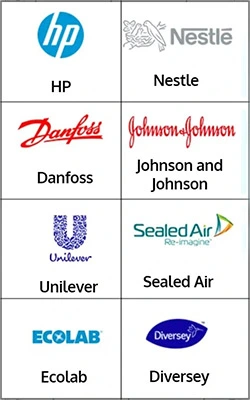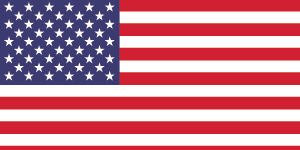Product
Polyalphaolefin (PAO) Price Trend and Forecast
Polyalphaolefin (PAO) Price Trend and Forecast
Polyalphaolefin (PAO) Regional Price Overview
Get the latest insights on price movement and trend analysis of Polyalphaolefin (PAO) in different regions across the world (Asia, Europe, North America, Latin America, and the Middle East & Africa).
Polyalphaolefin (PAO) Price Trend for the First Half of 2025
Asia
In the first half of 2025, PAO prices in the Asia-Pacific region showed a slight decline, mainly due to weakened demand from the automotive sector. The sharp drop in China’s passenger vehicle sales early in the year had a noticeable impact on lubricant consumption, a major application for PAO.
Polyalphaolefin (PAO) Price Chart
-price-trends-and-forecast.webp)
Please Login or Subscribe to Access the Polyalphaolefin (PAO) Price Chart Data
Many manufacturers relied on existing inventories rather than placing new orders, leading to subdued procurement activity. Although raw material costs and freight rates remained low, this did not support prices due to the muted demand environment. Toward May, the market stabilized, helped by modest recovery in India’s auto sector and controlled inventory levels, which prevented any sharp drops.
Europe
Europe saw a steep decline in PAO prices in the first quarter, driven by oversupply and weak demand from core industries like automotive and manufacturing. Production levels outpaced consumption, forcing producers to cut prices to move excess stock. Germany, a key market, continued to struggle with low car production and exports.
As a result, several producers scaled back operations to balance supply. By late May, prices steadied, as producers focused on inventory management and cautious buyers opted for routine restocking rather than bulk purchases. The industrial lubricants segment, particularly in commercial transport, offered some support.
North America
In the U.S., PAO prices rose slightly in Q1 due to weather-related supply constraints and improving manufacturing activity. Although base oil and ethylene prices stayed relatively stable, disruptions in transport and increased industrial output tightened supply.
The lubricant market remained steady, with EV sales showing an upward trend that partially offset slower traditional automotive demand. Through May, prices held firm as balanced demand and disciplined inventory control kept the market stable despite softer upstream costs.
Analyst Insight
According to Procurement Resource, Polyalphaolefin (PAO) prices are expected to remain steady, with producers closely watching shifts in automotive trends and upstream raw material costs.
Polyalphaolefin (PAO) Price Trend for Q4 of 2024
Asia
During the fourth quarter of 2024, the PAO market in Asia saw a clear downtrend. This was mainly due to weak demand from the lubricant sector, which is one of the largest consumers of PAO. Industrial activity remained slow across the region, and buyers showed a preference for cheaper alternatives, leading to reduced consumption.
Export opportunities were also limited, particularly to Europe and North America, which further weighed on market performance. Ongoing geopolitical issues, supply chain disruptions, and fluctuating oil prices added more pressure. As a result, producers struggled with inventory buildup and operated at lower production levels to manage costs and avoid oversupply.
Europe
In Europe, the PAO market remained fairly stable during Q4. There was a short-lived increase in demand early in the quarter as manufacturers restocked inventories. However, this momentum did not last, and demand soon leveled off.
The automotive sector, a major consumer of lubricants, continued to show weak performance, with reduced vehicle production and a growing shift toward electric vehicles. This transition led to lower lubricant usage, affecting PAO consumption. While prices held steady, market players stayed cautious, focusing on managing supply and maintaining balance amid soft demand and limited exports.
North America
The North American PAO market showed relative stability throughout Q4 2024. Demand from the lubricant industry remained under pressure due to a slow recovery in industrial activity and reduced consumer spending.
Export volumes were also lower, affected by global economic uncertainty and changing trade conditions. However, domestic demand was consistent enough to prevent significant price fluctuations. Producers adjusted supply chains and production strategies to adapt to the slower market pace, helping maintain overall market balance.
Analyst Insight
According to Procurement Resource, the PAO market may continue to face headwinds in the short term, with any recovery largely dependent on improvements in industrial activity and global lubricant demand.
Polyalphaolefins (PAO) Price Trend for Q3 of 2024
Asia
In Q3’24, the Polyalphaolefin (PAO) market in the Asian region saw prices decline due to subdued demand from industries like automotive and lubricants, leading to oversupply and price pressure.
Supply dynamics also played a role, with ample inventories and efficient production contributing to the price decrease. In China, the most significant price changes were observed, reflecting broader regional trends.
Europe
The Polyalphaolefin (PAO) market in Europe experienced price fluctuations in Q3’24, Moderate demand from downstream industries, particularly automotive and industrial sectors, impacted pricing dynamics. An increase in PAO prices in the latter part of July, driven by domestic buying activity and new orders, contributed to a tighter supply-demand balance. Supply chain disruptions in the global economy also played a role in the price trend, with interruptions in raw material availability and logistical challenges tightening supply conditions.
North America
In Q3’24, the Polyalphaolefin (PAO) market in North America witnessed a notable increase in prices driven by various market dynamics. The uptick in demand, combined with stable supply levels, created a favourable environment for price escalation. The sustained high prices of essential feedstocks like propylene further propelled the upward trajectory of PAO prices in the region. Specifically in the USA, which experienced significant price changes, the overall trend in Q3 was characterized by positive sentiment.
Analyst Insight
According to Procurement Resource, the prices of Polyalphaolefin are likely to continue its current trajectory given the complexities in the demand-supply dynamics and pricing fundamentals.
Polyalphaolefin Price Trend for Q2 of 2024
Asia
During the second quarter of 2024, the Asian polyalphaolefin market experienced an oscillating trend, primarily influenced by its feedstock commodities. Following notable improvements in the first quarter, the growth of polyalphaolefin prices slowed down in Q2. This depreciation in the market momentum was largely influenced by fluctuating feedstock ethylene prices and loss of consumer confidence in this sector.
The slow recovery of the market after the May Day holiday season further compounded the concerns of the market players. Further, the reduction in the export profile of the Asian countries depreciated under the rising challenges in the trading sector, which concerned the traders even for forthcoming quarters as well.
Europe
During Q2'24, the price of polyalphaolefin remained stable, demonstrating the market's resilience and ability to maintain equilibrium amid challenging economic conditions. This stability was supported by consistent and sufficient supply levels, ensuring that there were no significant disruptions in production or distribution chains. Despite a notable decline in demand, primarily driven by reduced activities in the automotive and industrial sectors, suppliers did not resort to price increases. The downturn in these sectors led to lower consumption of lubricants and, consequently, a decreased demand for polyalphaolefin.
The automotive sector, in particular, experienced reduced production and lower demand for vehicles, impacting polyalphaolefin consumption. Additionally, manufacturing faced setbacks with contractions in output and new orders, further compounded by geopolitical conflicts and port congestion affecting overseas orders. Despite these challenges, the polyalphaolefin market managed to maintain stability, supported by sufficient supply levels and balanced production, preventing immediate price fluctuations.
North America
In North America, the polyalphaolefin market mirrored global trends throughout the second quarter of 2024. Prices fluctuated within a narrow range, reflecting a period of stabilization. After a subdued performance in the first half of the quarter, prices began to normalize towards the latter half as supply and demand dynamics started to align more closely. This stabilization helped to balance the market, resulting in a mixed but generally stable price performance. The market conditions in North America exhibited a similar pattern to those seen in Asia, with the overall trend showing a consolidation of prices due to synchronized supply and demand outlooks.
Analyst Insight
According to Procurement Resource, the price of Polyalphaolefin is estimated to be primarily driven by the market sentiments of its feedstock olefin sector and economic strategies implemented around the globe in order to mitigate the current challenges.
Polyalphaolefin (PAO) Price Trend for Q1 of 2024
| Product | Category | Region | Price | Time Period |
| Polyalphaolefin (PAO) | Chemicals | USA | 2580 USD/MT | March 2024 |
| Polyalphaolefin (PAO) | Chemicals | Europe | 2389 USD/MT | March 2024 |
Stay updated with the latest Polyalphaolefin (PAO) prices, historical data, and tailored regional analysis
Asia
Amidst a post-holiday season surge in industrial growth and heightened consumption of Polyalphaolefin in the Chinese market, prices of the product gradually recovered during the first quarter of 2024. This resurgence was largely driven by a revival in Chinese manufacturing activity, leading to a rapid increase in demand from downstream industries.
Interestingly, while the Asian markets experienced this upward trend, European and North American markets followed more conventional patterns. With the rising upstream costs with heightened fuel and energy prices, the prices were pushed further up. Reduced crude oil volumes from OPEC+ became the fundamental growth driver in the Asian region.
Europe
Several influencing factors drove the Polyalphaolefin prices uphill in the European markets. Following the New Year holiday season, there was some marginal recovery; in the end, consumer sentiment was observed, which slightly alleviated inventory strains and amplified demand. Throughout Q1’24, prices sustained their elevated stance, with imports taking precedence over domestic production.
Meanwhile, as the Suez Canal crisis precipitated a surge in freight costs and disruptions in global supply channels was seen. At the same time, Saudi suppliers grappled with mounting input expenses attributed to soaring ethane prices. Concurrently, demand from downstream sectors like lubricants and surfactants experienced a rapid upswing; because of all these reasons, a rising price trajectory was witnessed in the European Polyalphaolefin (PAO) market during the first quarter of 2024.
North America
Following the price surges in the global markets the PAO rates inclined in the American markets as well. Amidst rising demands, a supply crunch was felt in the region, primarily driven by the maintenance shutdowns of various production plants. Polyalphaolefin is a commonly used industrial lubricant and is commonly consumed in the automotive and other manufacturing industries. As the feedstock prices escalated in the middle of the already existing supply crunch the PAO prices too followed that. The suppliers raised the prices, seeing the available revenue margins. Overall, positive market sentiments were observed.
Analyst Insight
According to Procurement Resource, the price trend of Polyalphaolefin is estimated to incline in the coming days as well since the growth of the downstream consumption projects an optimistic outlook for the Polyalphaolefin market.
Polyalphaolefin Price Trend for Q4 (October - December) of 2023
Asia
The outlook of Asian Polyalphaolefin price trend was similar to the European and North American markets. The region faced a shortage in demand for new automobiles, which was evident in their rates of procurement of poly alpha-olefin. The region also suffered from weak momentum of upstream crude oil and fuel prices as the domestic supply of these commodities surpassed its demand, which eventually showcased its negative impact on the Polyalphaolefin price graph.
Europe
A period of stagnation occurred in the European Polyalphaolefin market in the latter months of the end quarter of 2023. This was mainly due to a decrease in demand from the automotive and downstream lubricant industries, as they themselves struggled with the decline in sales numbers.
To add to the list of challenges, the supply of raw materials in the region was also abundant, and that, in turn, lowered its cost. In November 2023, the European Statistics Department released data showing a 3.2% positive inflation rate, which set the stage for market dynamics as it led to the fall the consumer and investors' confidence in the regional Polyalphaolefin industries.
North America
Throughout the fourth quarter, the US Polyalphaolefin market saw a pessimistic trend, which was linked to an excess supply and decreased demand from the automotive and lubricant industries. The concerns regarding decreased expenditure by the consumer sector on automobiles and other downstream products caused wrinkles in the trading sector.
As a result, in order to reduce the built-up inventory pressure, the traders started practicing destocking activities by offering discounts on bulk purchases of poly alpha-olefin. Additionally, obstructions in the Panama Canal impeded international trade from the United States, leading to shipment delays and overall subdued dynamics of the Polyalphaolefin market.
Analyst Insight
According to Procurement Resource, the price trend of Polyalphaolefin are expected to face a downturn in its prices as the consumer demand and overall overview of the market do not look in favor of the said market.
Polyalphaolefin Price Trend for Q3 (July - September) of 2023
Asia
The initial phase was riddled with the weak performance of the downstream industries, but as the quarter progressed, the polyalphaolefin price trend inclined. First, the market struggled with lower demand, declining sentiments of the downstream industries, and lower rates of imports. However, the Chinese economy improved significantly in the later stages of the quarter as compared to the US dollar. In addition to this, the incline in demand and significant appreciation in the cost of crude oil prices further supported the rise in the polyalphaolefin price trend.
Europe
The inclination in the polyalphaolefin prices was supported by high demand from the lubricant industry and other related sectors. In addition to this, the fall in the rates of production and a high number of exports to Asian countries also played a major role in keeping the polyalphaolefin price graph in the green zone.
The supply depreciation and consistently declining inventories also exerted their positive influence on the polyalphaolefin price trend. However, the growth trajectory of polyalphaolefin prices stabilized somehow towards the end of the third quarter on account of stagnancy in the number of inquiries of the automotive's domestic and overseas sectors.
North America
In the third quarter, the polyalphaolefin price trend showcased an opposite trajectory as that was observed in the Asia Pacific and European countries. The market registered a substantial decline due to the slowing down of economic recovery and the sliding value of the US dollar. In addition to this, the adverse effect of poor economic growth in North America was also seen in the manufacturing sector. The rates of production of polyalphaolefin, as a result, also remained subdued during this quarter, causing an excess of pressure on the traders, and causing the whole polyalphaolefin price trend to suffer.
Analyst Insight
According to Procurement Resource, the price trend of Polyalphaolefin are expected to oscillate amid the fluctuating demand dynamics and weak growth of the global economy.
Polyalphaolefin Price Trend for the First Half of 2023
Asia
Polyalphaolefin prices had a mixed run in the Asian market in the first half of 2023. Market dynamics were mostly stable during the said period. Mild demands supported the fair production capacities. Downstream automotive and lubricant industries also posed fair demands stabilizing the market. Feedstock ethylene (derived from crude oil) also fluctuated on the lower side in the discussed period, contributing to the sullen movement in the price curve. Overall, Polyalphaolefin prices wavered on the lower side during the first half of 2023.
Europe
European Polyalphaolefin markets exhibited sullen price trend during H1 2023. The European automotive industry has been hit hard by the economic crisis because which affected Polyalphaolefin consumption rates. The consumers posed bearish demands causing the inventories to overflow. European suppliers placed very limited orders only as per downstream inquiries. Overall, market sentiments remained dull and slow because of high supply and low demand.
North America
The Polyalphaolefin market in the North American region replicated stable sentiments from the Asian market. Crude oil prices were stable, and feedstock ethylene prices were also relatively steady. The automotive sector had a warm run which kept the demand dynamics stable. Overall, the market was slow yet stable as the supply-demand equilibrium remained constant.
Analyst Insight
According to Procurement Resource, the Polyalphaolefin market is expected to continue the same lukewarm growth as the supply-demand dynamics are stable. Demand from downstream industries will continue to drive the Polyalphaolefin market.
Polyalphaolefin (PAO) Price Trend for the Second Half of 2022
Asia
The market for poly-alpha-olefins saw an uprising trend throughout the third quarter. The decrease in the demand from the automotive sector and the decline in ethylene costs did not affect the market much. This incline in prices is majorly attributed to the stable demand from the EV market. The prices then dipped in the fourth quarter due to the decline in demand from the automotive industry. Poor economic conditions, a rise in COVID-19 restrictions, and poor demand from the end-user industries led to the decline in the prices.
Europe
Throughout the third quarter, the prices declined due to the poor performance of the automotive industry. The high costs of energy production and the operation rates of the automotive industry remained low during the quarter. The fourth quarter, however, saw a marginal incline in the prices initially due to the rise in the feedstock costs. The rise in the operational cost during the first half of the fourth quarter drove the rise in the prices. This rise was short-lived as the rise in inventories during the later months led to a decline in the prices.
North America
The prices declined during the third quarter due to the decline in the performance of the automotive sector in the North American region. The decline in the feedstock demand also contributed to this decline. The fourth quarter also showcased a similar trend in the price of the commodity. Increased production costs, poor demand, a rise in natural gas costs, and reduced exports during the third quarter led to a decline in the prices of the commodity.
Analyst Insight
The prices of PAO are likely to decrease during the coming month given the rise in the domestic inventories, poor demand from the automotive sector, and high inflation in the market.
Polyalphaolefin (PAO) Price Trend for the First Half of 2022
Asia
The price trend of PAO (Polyalphaolefin) registered a fluctuating pattern throughout the said period in the Asian market. The Indian automotive industry suffered owing to the trade restrictions, supply shortages and higher operating costs, hence the prices in the Indian market slipped averaging 4885 USD/MT.
However, in the Chinese domestic arena, the automotive industry kept stable owing to the muted demand with the price of PAO averaging 3515 USD/MT. However, the prices soon stabilized during the second quarter as trade and port congestion relaxed owing to which the feedstock prices stabilized. Hence, the booming demand from the automotive industry caused the PAO prices to increase.
Europe
The European market closely followed its Asian counterpart. The prices dipped during the first quarter and stabilized during the second quarter. Suffering from the direct consequences of the Russian invasion of Ukraine, the entire European region registered double-digit inflation.
These inflated prices discouraged the automotive sector and hence the price of PAO suffered averaging 4170 USD/MT. However, the prices stabilized towards the second quarter as the feedstock prices relaxed with the arrival of substitute shipments from other regions.
North America
The price trend for PAO kept strong throughout the year’s first half due to the unaffected demands from the resource-hungry automotive sector. The price of polyalphaolefins averaged 3260 USD/MT during the said period in the US domestic market.
Procurement Resource provides latest prices of Polyalphaolefin (PAO). Each price database is tied to a user-friendly graphing tool dating back to 2014, which provides a range of functionalities: configuration of price series over user defined time period; comparison of product movements across countries; customisation of price currencies and unit; extraction of price data as excel files to be used offline.
About Polyalphaolefin (PAO)
Polyalphaolefin (PAO) is by far the most significant synthetic base oil used in commercial and automotive lubricants. Since it closely resembles the best hydrocarbon (branched) structure found in mineral oils, it is referred to as a synthetic hydrocarbon (SHC). There are no ring structures, double bonds, sulphur, nitrogen, or waxy hydrocarbons in PAO.
The absence of these components or structures produces an exceptionally non-polar base oil with a high viscosity index of about 130, superior low-temperature flow, strong oxidation stability, outstanding pour-point characteristics, and compatibility with mineral oils, paints, and seals frequently found in lubricating oil systems.
Polyalphaolefin (PAO) Product Details
| Report Features | Details |
| Product Name | Polyalphaolefin (PAO) |
| HS CODE | 39029000 |
| CAS Number | 151006-60-9 |
| Industrial Uses | Used in industrial and automotive lubricants, As a coolant in radiators |
| Chemical Formula | (CH2CHR)n |
| Synonyms | Hydrogenated polydecene |
| Molecular Weight | Variable |
| Supplier Database | Exxon Mobil Corporation, INEOS, Chevron Phillips Chemical Company LLC, Lanxess Group |
| Region/Countries Covered | Asia Pacific: China, India, Indonesia, Pakistan, Bangladesh, Japan, Philippines, Vietnam, Iran, Thailand, South Korea, Iraq, Saudi Arabia, Malaysia, Nepal, Taiwan, Sri Lanka, UAE, Israel, Hongkong, Singapore, Oman, Kuwait, Qatar, Australia, and New Zealand Europe: Germany, France, United Kingdom, Italy, Spain, Russia, Turkey, Netherlands, Poland, Sweden, Belgium, Austria, Ireland Switzerland, Norway, Denmark, Romania, Finland, Czech Republic, Portugal and Greece North America: United States and Canada Latin America: Brazil, Mexico, Argentina, Columbia, Chile, Ecuador, and Peru Africa: South Africa, Nigeria, Egypt, Algeria, Morocco |
| Currency | US$ (Data can also be provided in local currency) |
| Supplier Database Availability | Yes |
| Customization Scope | The report can be customized as per the requirements of the customer |
| Post-Sale Analyst Support | 360-degree analyst support after report delivery |
Note: Our supplier search experts can assist your procurement teams in compiling and validating a list of suppliers indicating they have products, services, and capabilities that meet your company's needs.
Polyalphaolefin (PAO) Production Processes
- Production of PAO from Polymerization
In this process, polyalphaolefin is produced by polymerization of alpha olefin.
Methodology
The displayed pricing data is derived through weighted average purchase price, including contract and spot transactions at the specified locations unless otherwise stated. The information provided comes from the compilation and processing of commercial data officially reported for each nation (i.e. government agencies, external trade bodies, and industry publications).
Assistance from Experts
Procurement Resource is a one-stop solution for businesses aiming at the best industry insights and market evaluation in the arena of procurement. Our team of market leaders covers all the facets of procurement strategies with its holistic industry reports, extensive production cost and pre-feasibility insights, and price trends dynamics impacting the cost trajectories of the plethora of products encompassing various industries. With the best analysis of the market trends and comprehensive consulting in light of the best strategic footstep, Procurement Resource got all that it takes.
Client's Satisfaction
Procurement Resource has made a mark for itself in terms of its rigorous assistance to its clientele. Our experienced panel of experts leave no stone unturned in ensuring the expertise at every step of our clients' strategic procurement journey. Our prompt assistance, prudential analysis, and pragmatic tactics considering the best procurement move for industries are all that sets us apart. We at Procurement Resource value our clients, which our clients vouch for.
Assured Quality
Expertise, judiciousness, and expedience are the crucial aspects of our modus operandi at Procurement Resource. Quality is non-negotiable, and we don't compromise on that. Our best-in-class solutions, elaborative consulting substantiated by exhaustive evaluation, and fool-proof reports have led us to come this far, making us the ‘numero uno' in the domain of procurement. Be it exclusive qualitative research or assiduous quantitative research methodologies, our high quality of work is what our clients swear by.
Table Of Contents
Our Clients

Get in Touch With Us

UNITED STATES
Phone:+1 307 363 1045

INDIA
Phone: +91 8850629517

UNITED KINGDOM
Phone: +44 7537 171117
Email: sales@procurementresource.com

